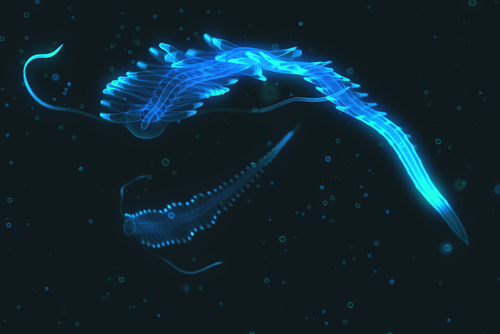
In a remarkable breakthrough, scientists have finally identified an alien-like sea creature that baffled experts for nearly half a decade. This peculiar organism, no larger than a ladybug, was first discovered off the coast of Japan and sparked intrigue and curiosity among the scientific community.
The creature was initially spotted by Ryo Minemizu, a Japanese underwater photographer, 52 feet below the surface near Kiyan Cape in Okinawa. The images he posted on his Instagram account drew the attention of hundreds of biologists worldwide, none of whom could correctly identify the creature.
Researchers have finally identified this tiny, flittering swimmer—and it’s not a worm, a mollusk, or a crustacean. https://t.co/Z63W0RRc3W
— News from Science (@NewsfromScience) October 1, 2023
The mystery was eventually unraveled by Igor Adameyko, a developmental neurobiologist at the Medical University of Vienna.
After obtaining a sample from Minemizu, Adameyko conducted a thorough analysis of the specimen. His findings revealed that the creature was not a single organism but a colony of two parasitic larvae worms, swimming as one entity.
The creature’s body consisted of individual organisms, referred to as ‘sailors,’ anchored to a central blob carrying over 1,000 ‘passengers.’ These passengers were found to belong to the digenean family Acanthocolpidae, likely genus Pleorchis, a species of flatworm typically infecting the intestines.
A DNA test confirmed both sailors and passengers belonged to the same species.
Further research by the University of Vienna revealed intriguing details about the creature’s behavior. The sailors, despite lacking penetration organs, carry the passengers through the water in search of a suitable host.
They exhibit different collective activity regimes, beating their tails in synchrony, which results in aggregate pulsing or jumping movements. This coordinated movement gives the illusion of a single swimming animal.
1. SEA MONSTERS
…
A “startling discovery” revealed a 30-foot creature lurking in the sea. Researchers from Japan’s National Science Museum identified the creature as an Architeuthis a rare species that seizes upon bait with extreme force and violence.” pic.twitter.com/f5ThAv8cY0— Heisjayy 𝕏 (@Jayysen_) November 19, 2022
The relationship between the sailors and passengers is fascinating. The passengers appear to be the infecting agents, while the sailors merely propel them towards a host.
However, the fate of the sailors remains uncertain. Scientists have proposed two hypotheses: either they sacrifice themselves to ensure the transmission of the passengers, or they continue their life in the fish that has consumed the aggregate.
This discovery not only sheds light on the incredible diversity of marine life but also underscores the importance of continued exploration and research in our oceans.
The identification of this alien-like sea creature is a testament to the perseverance of scientists who, despite initial confusion and uncertainty, persisted in their quest for knowledge.
The scientific community’s relentless pursuit of understanding has once again borne fruit. This alien-like sea creature, once an enigma, now stands as a symbol of the wonders that lie beneath the ocean’s surface, waiting to be discovered.












